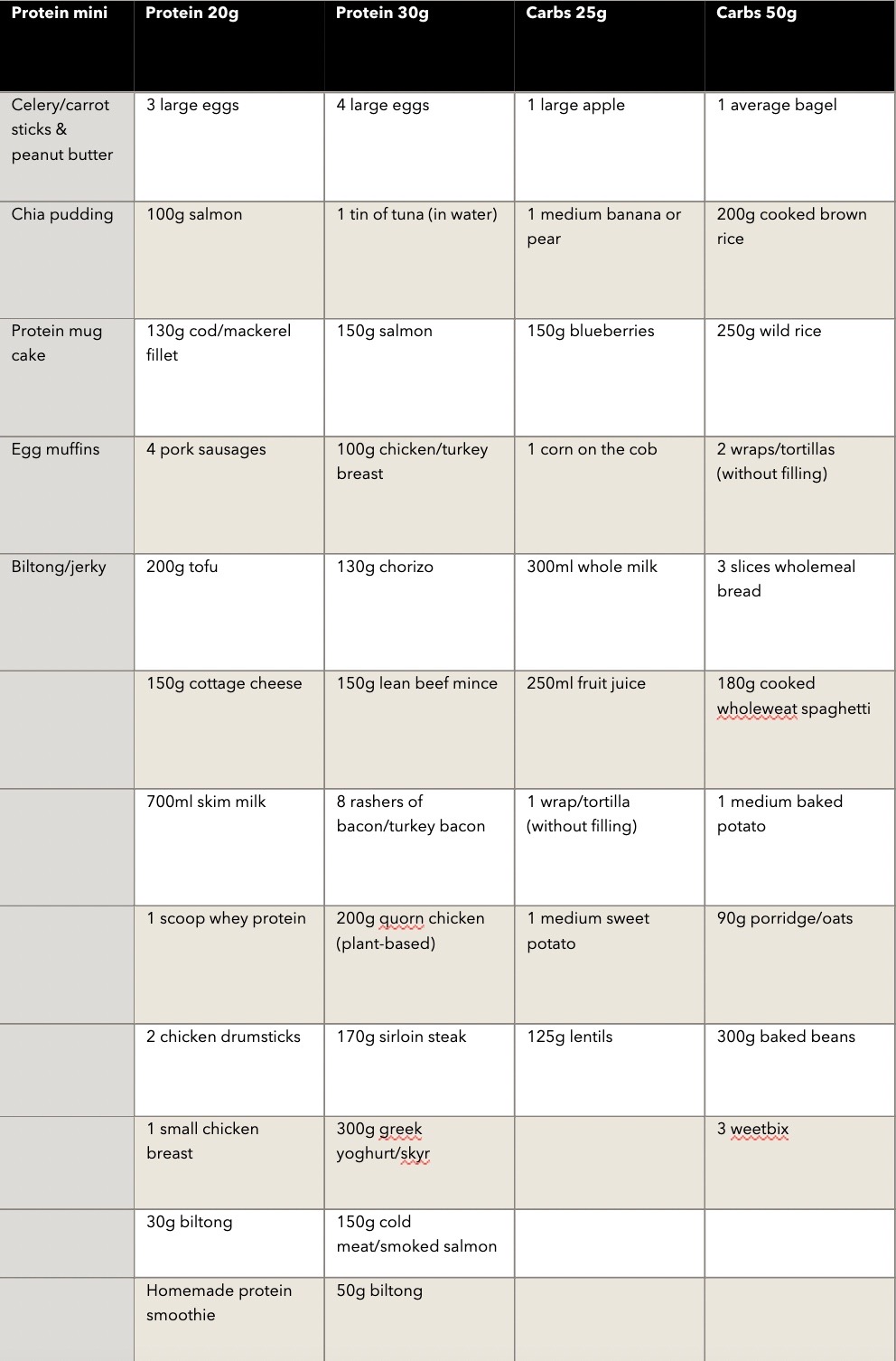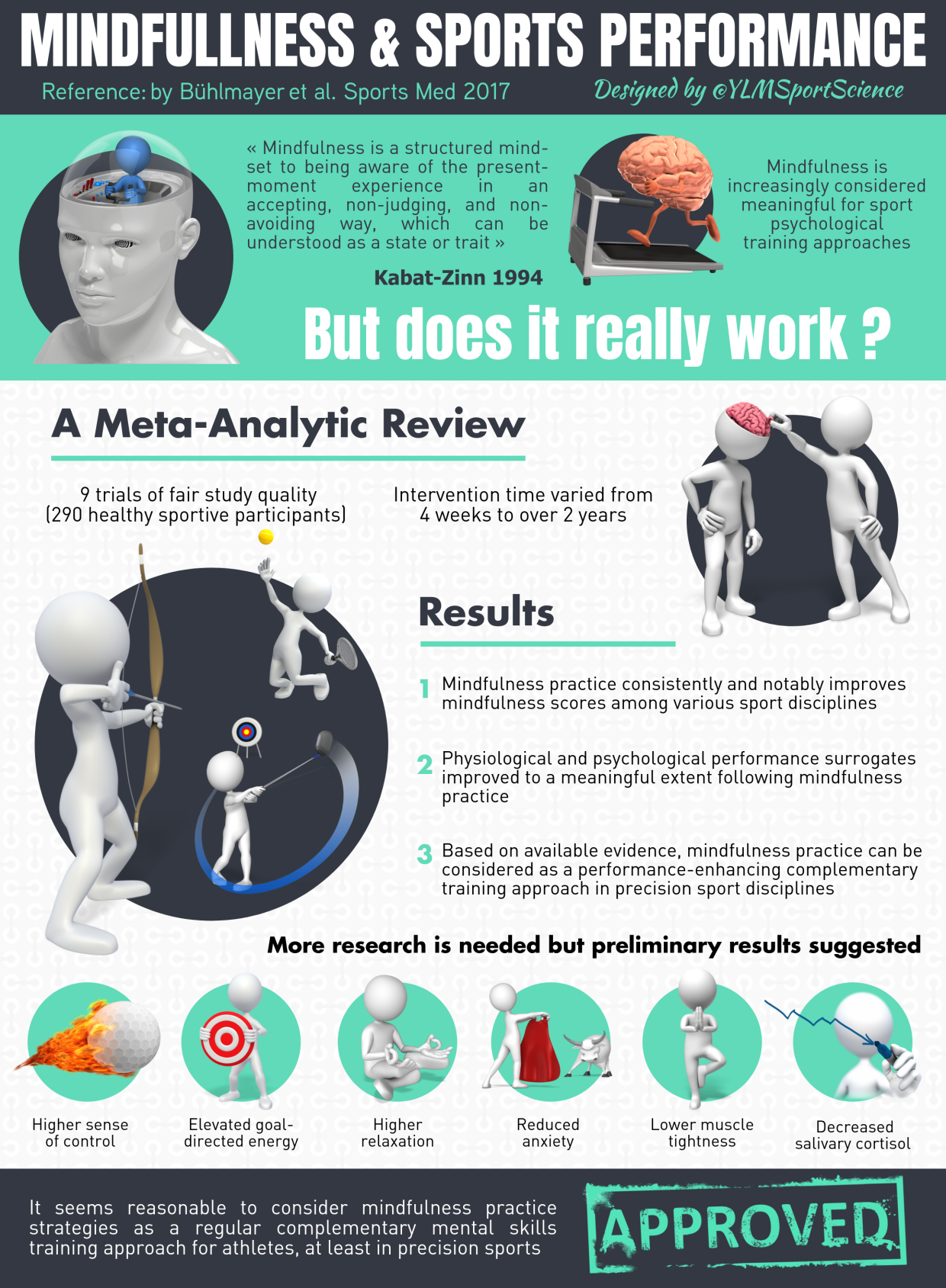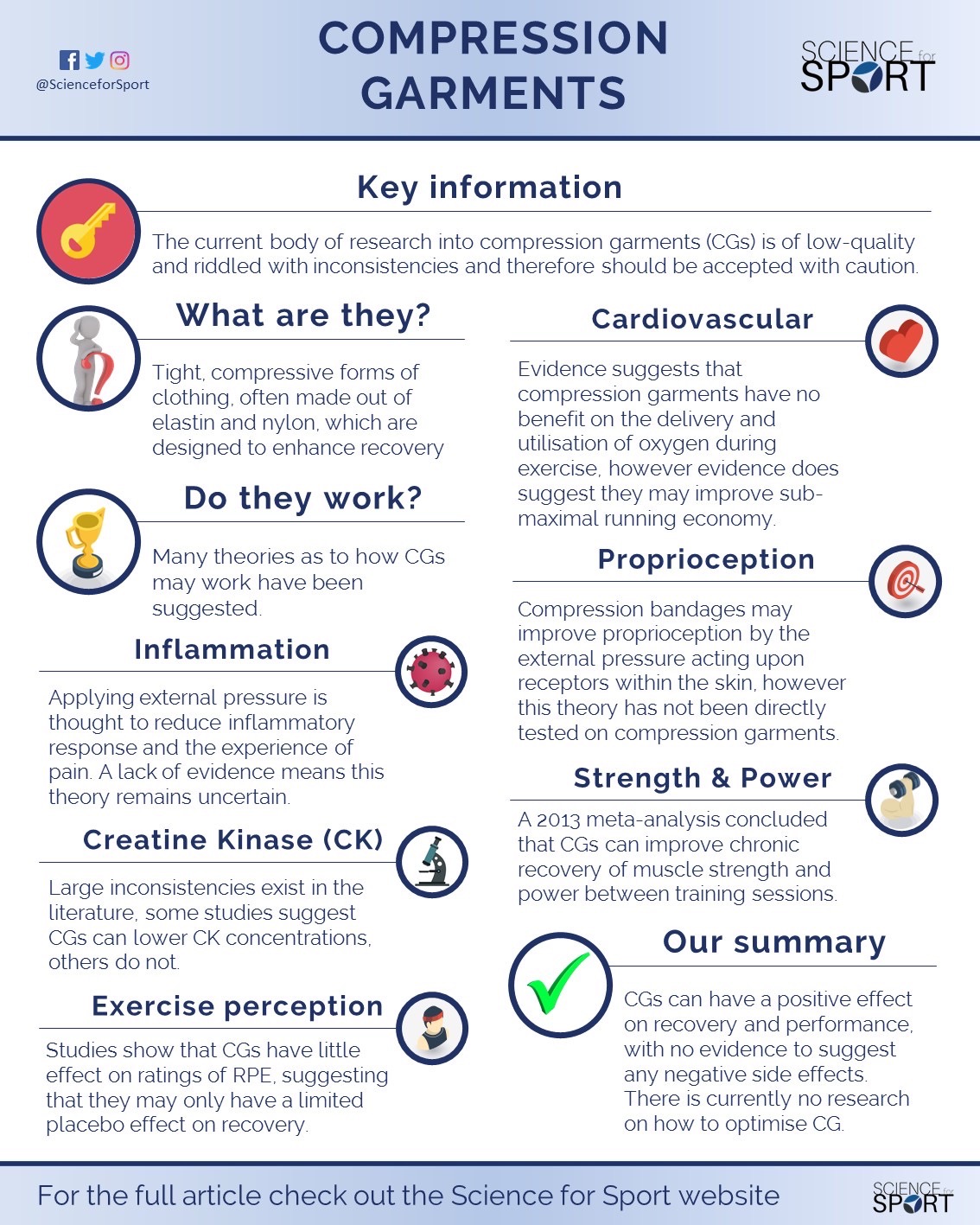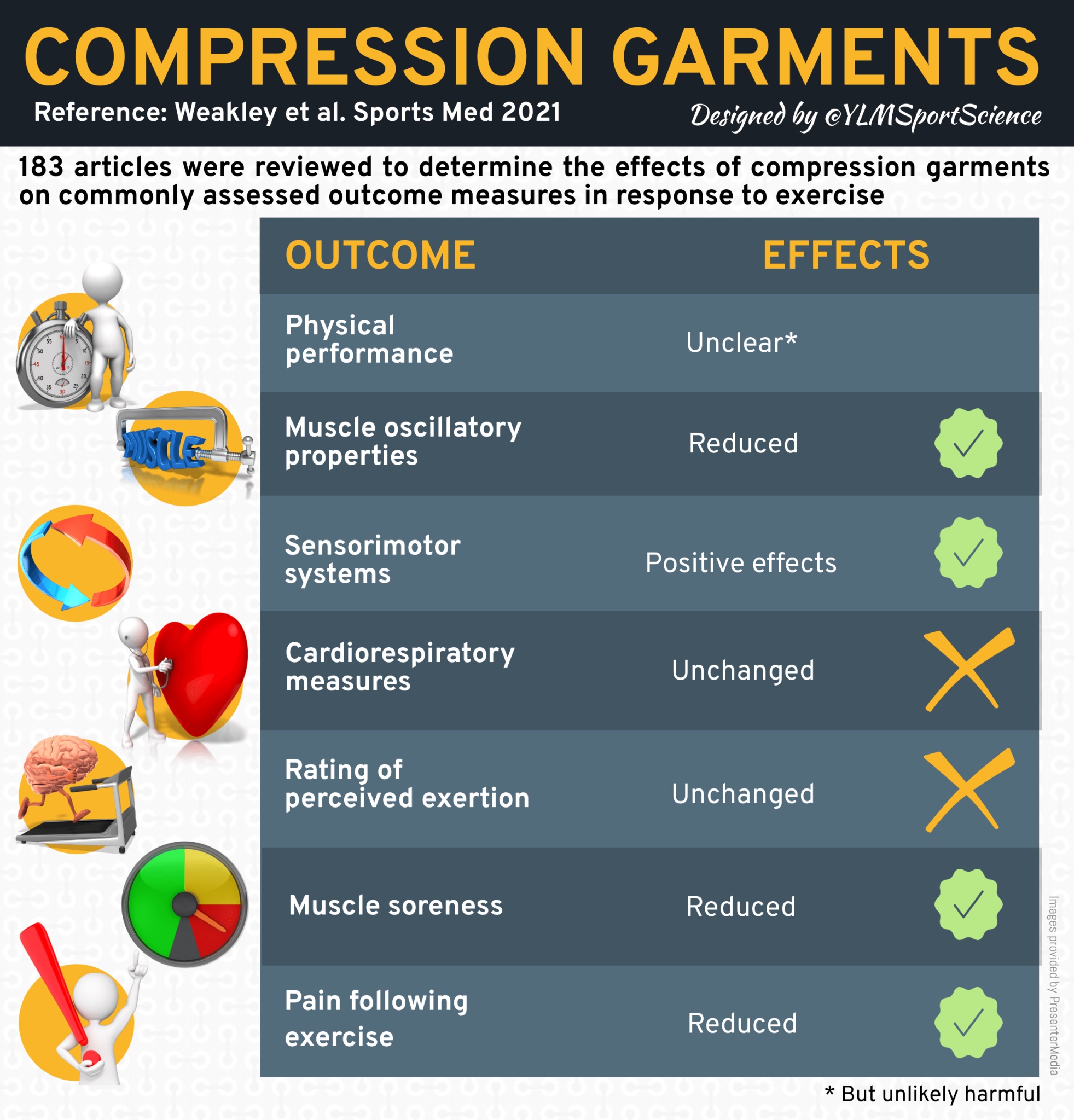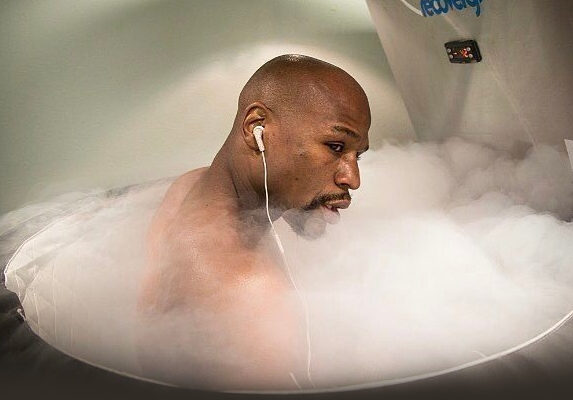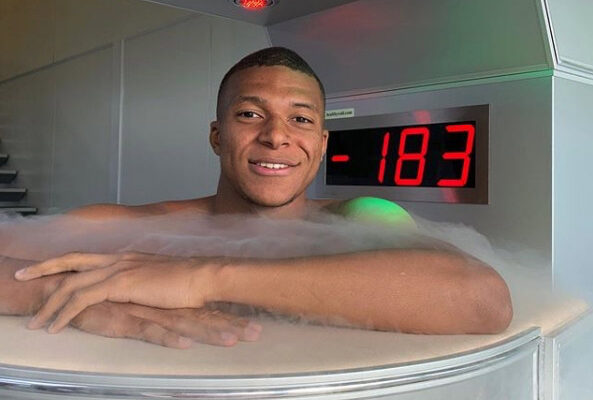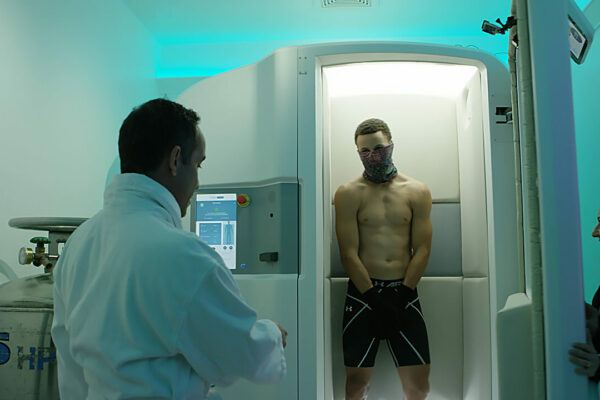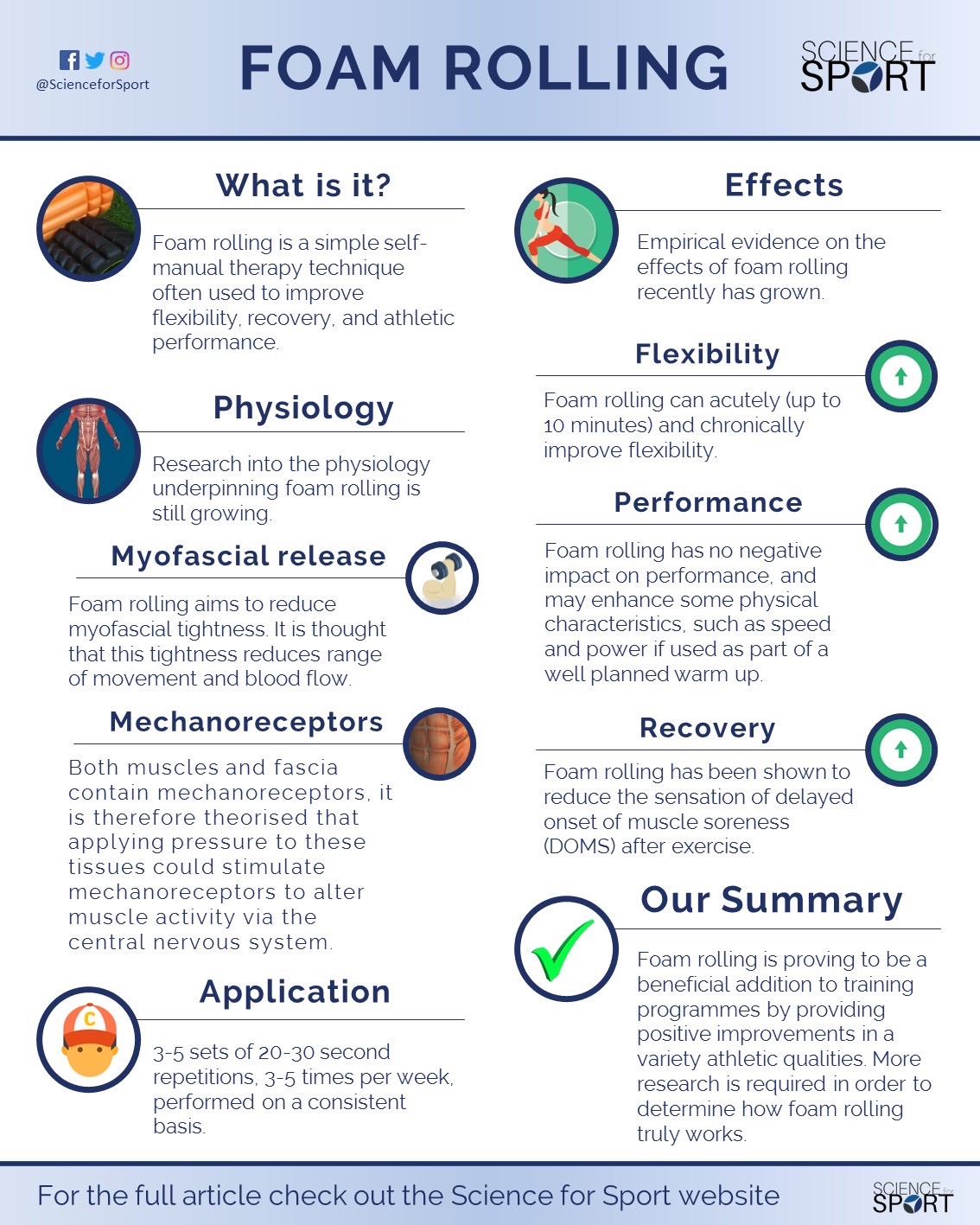
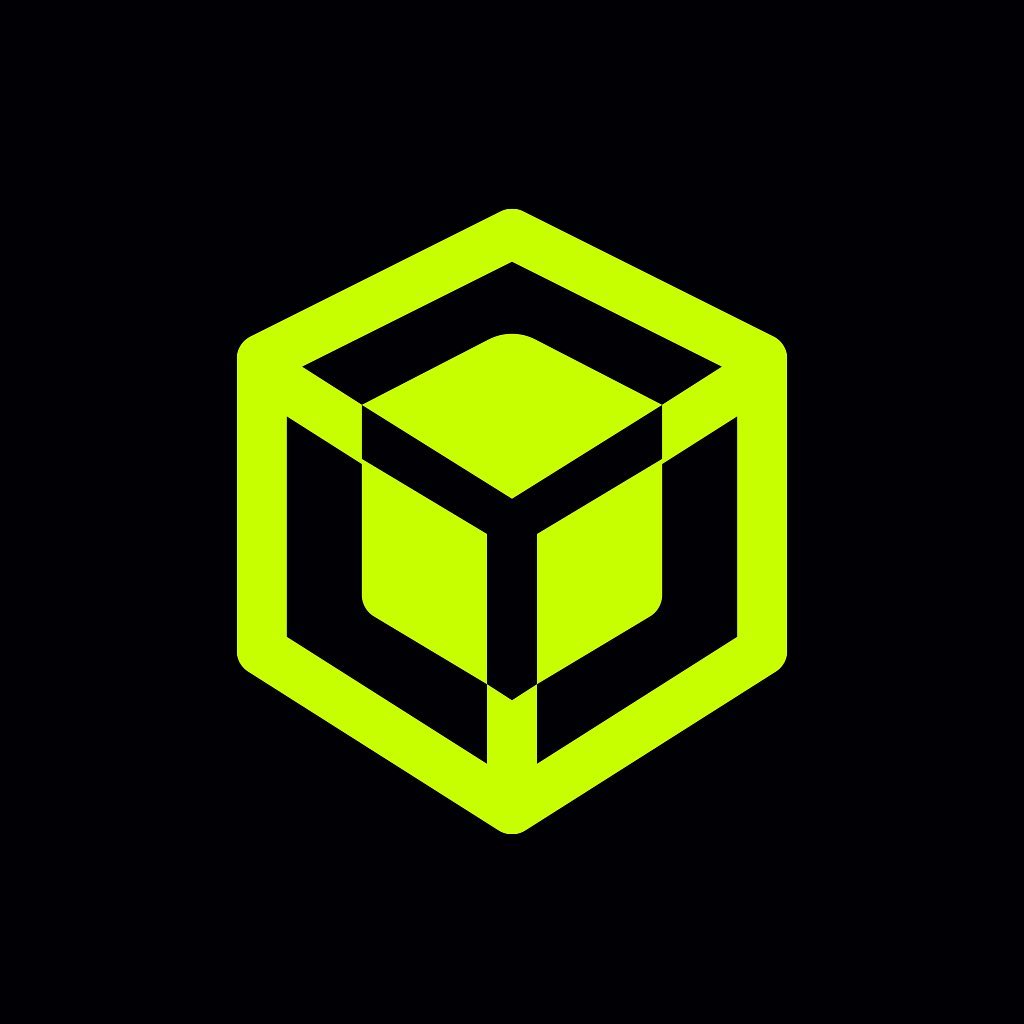
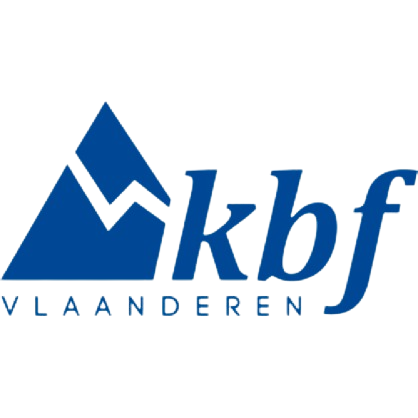
Recovery Tools
What is an active recovery?
Taking RESPONSIBILITY (being proactive & sticking to planning)
Spending ENERGY (get moving with low intensity activity to get some energy in return)
SUMMARY: increased fitness = boosted recovery ability & reduced injury risk
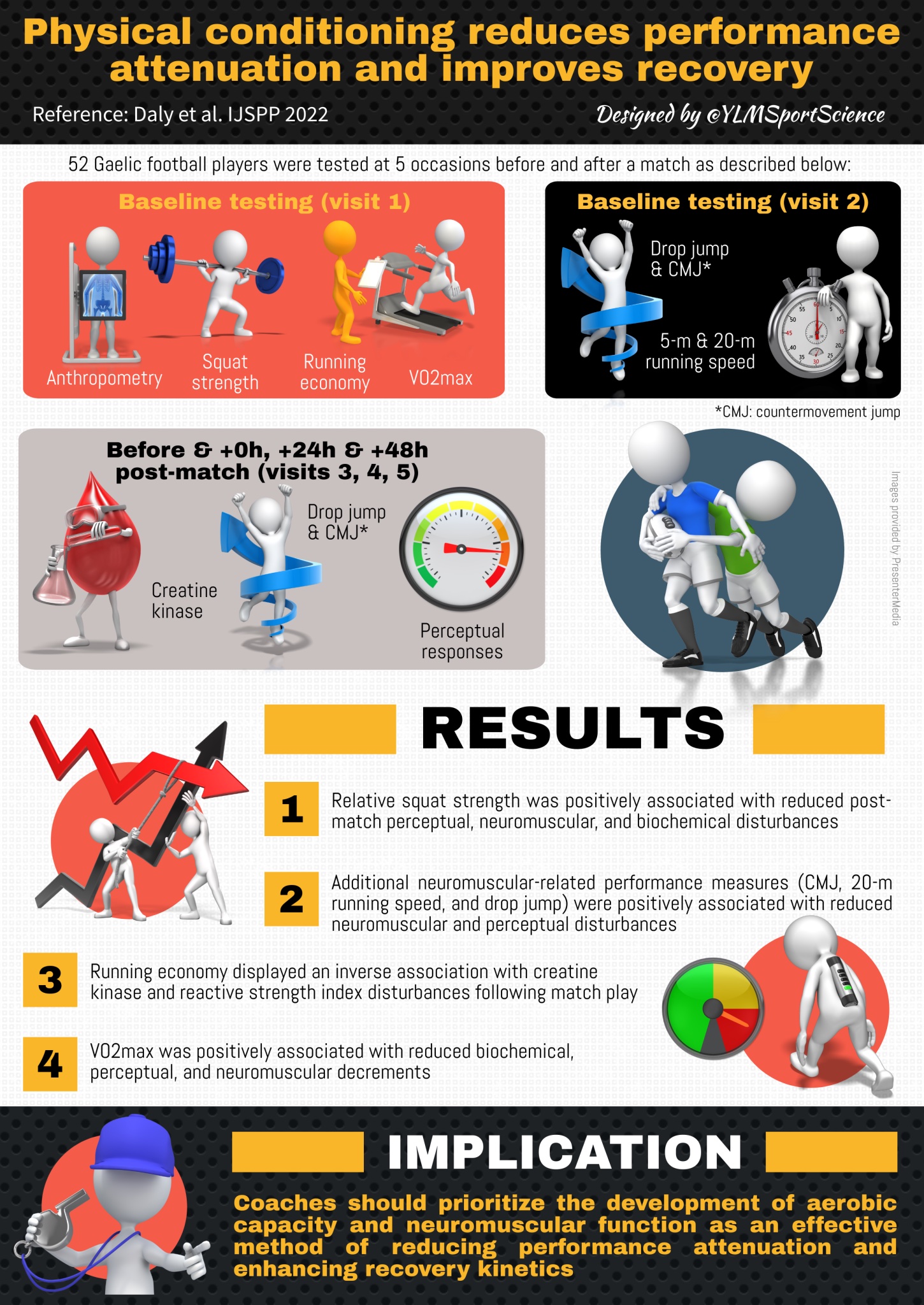
SUMMARY: mental rest is VERY important, & doing nothing is not enough
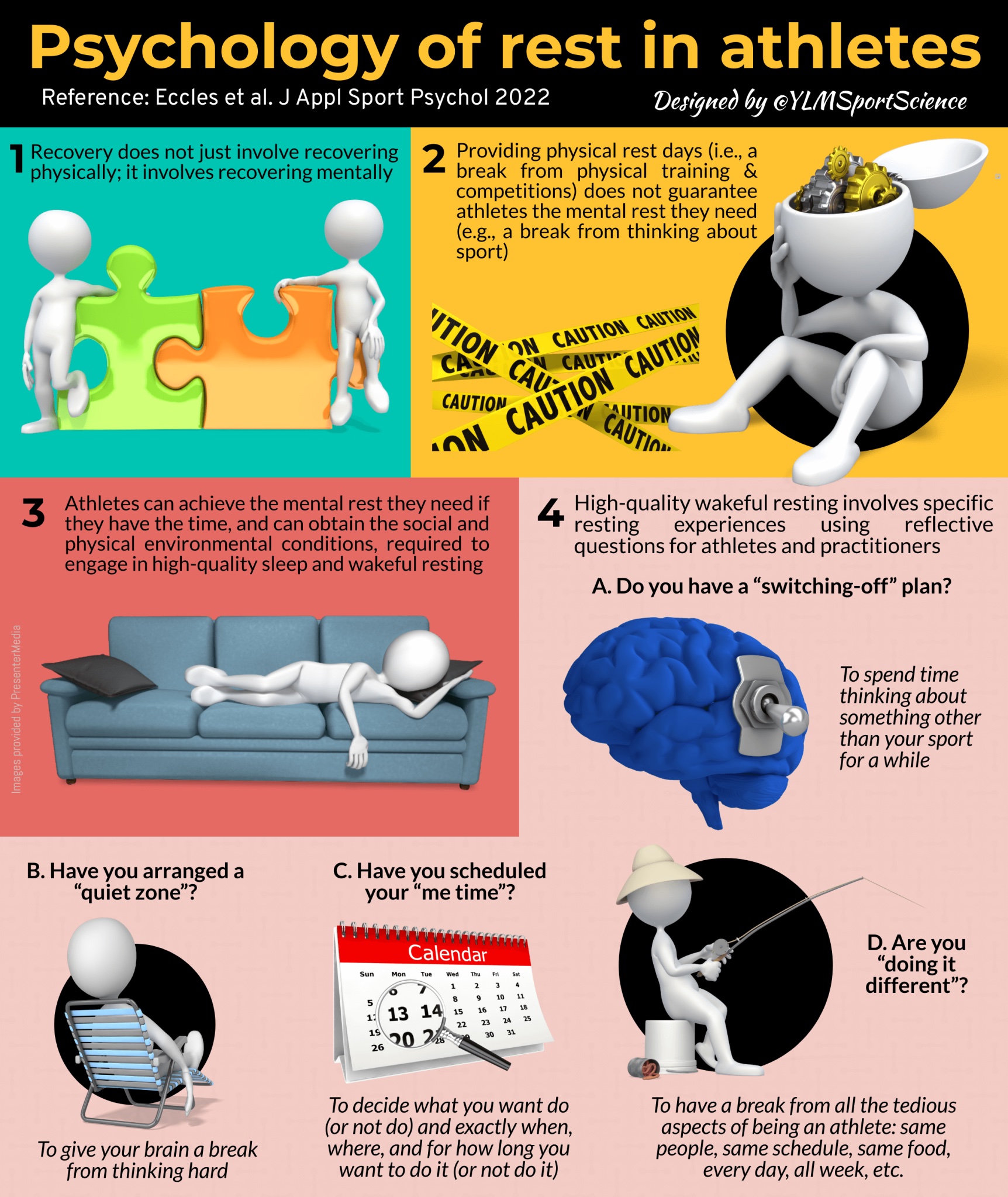
Sleep
“Usain Bolt once woke up from a nap 35 mins before a race, and broke a world record”
Summary of research
”Sports skills & reaction times can be BOOSTED in performance by getting more sleep. Sleep is especially rewarding & restorative to cognition.
”The MORE sleep the BETTER. Less than 7 hours sleep can equal up to 1.7 times injury risk in adolescent athletes.
”Circadian rhythm & game rhythm are HUGE performance influencers. Adjust both for your next competition. Consistency is always desirable.
Sleep extension week of 9 hours per night = tennis serve accuracy increased significantly after this week. An extra 2 hours per night can significantly boost performance.
One night sleep deprivation = no difference in power tests, but significant decreases in reaction time
Sleep extension period of 10 hours each night = increases in sprint times, free throws, 3-pointers & improved reaction times
Athletes have a circadian peak performance window (usually late afternoon to evening). Playing within this window can provide a significant athletic advantage over opponents. West coast NFL teams playing 8pm games on the east coast won twice as often as the east coast teams (likely because their body clocks are set to 3 hours earlier).
Nutrition & hydration
”Eat real foods (not processed), mostly plants, not too much
David KatzSpecialist in lifestyle medicine & nutrition
Nutrition is a minefield to navigate as a professional athlete
One of the best solutions is to simply hire the services of a sports nutritions or dietician
SPP has affiliate dieticians that are among some of the best in the world
Contact us if you’re interested in stepping up your nutrition & hydration game
One simple, cheaper strategy to learn about the foods you eat is to use MyFitnessPal. A free food logging app that gives you some easy visual feedback on what you eat with a day overview. Whilst this is largely seen as a calorie counting tool (which is probably not the healthiest way to approach your food), this can very easily teach you some useful lessons on the value of some foods, the important macronutrients and understanding how optimal a typical day of food actually is for yourself. Of course professional guidance from a nutritionist is preferred, but if you are willing to explore the basics of food science for yourself first then this is a good place to start.
Get moving
Perhaps the most powerful recovery tool is getting yourself moving
A controlled amount of stress & load on your tissues on a recovery day is desirable
Low intensity movement is a simple way to promote blood flow, assist with removal of byproducts in your muscles, improve mood and get you psychologically ready for the next day of training
Yoga
Has lots of overlap with mindfulness & meditation
Many yoga practices are focussed on mind-body connection
Offers many different forms to individualize (Yin, Hatha, Hot, Power)
Parts like Shavasana can provide opportunities for deep relaxation
Lets you explore & improve flexibility & mobility gently
Is tied very closely to breathing practices
Mobility tabatas
Time efficient method to boost mobility, stability & coordination
Requires minimal to no equipment (can be done anywhere)
Very low impact on the body and can have a restorative effect
Can be used for post-travel sessions, morning ‘wake-ups’ or recovery blocks
Recovery isometrics
Isometric holds of ~30s for 2-3 sets with a moderate load
Can help to balance between tendon stiffness & muscle strength
These can have a restorative effect on the muscle-tendon unit
It can also have an injury preventative effect
Listen to below podcast for more detail on tendon care
Flush out run/bike/walk
Very light intensity aerobic exercise to flush out the legs
2x6x60m recovery runs @ 50% jogging speed
Bike 5×3 mins at low resistance & low speed (with mobility between)
Walk 30-60 mins
Saunas & cold exposure
Exposure to temperature stress can influence how we feel in the recovery process
There is also a growing body of evidence to suggest that it may help us live longer & healthier lives too
80-100 degrees celsius minimum - Finnish (hot saunas) not infrared.
The average person will lose 0.5kg in swear during a single sauna session.
Drink PLENTY of fluids before, during & after the sauna to account for this.
THE SCIENCE: Sauna bathing is associated with many health benefits from cardiovascular and mental health, to fertility and athletic endurance.
It does this by basically providing the same effects of light-moderate cardiovascular exercise but without the joint load & impact on the body.
Sauna use of 4-7x per week can result in up to 50% reduction in risk of cardiovascular injury.
Depth should be beyond the belly-button, and the higher the better.
Even a short full body dip is better than nothing at all.
What else?
There are many further options to use in the recovery process
Although most are not strongly backed by science, they can be still useful
Especially to freshen up your recovery routine and reduce monotony of training & environment
As with most aspects of training, individualisation & exploration is important
What works for one may have zero effect on another, experiment as much as you can
Below you can find a list of extra recovery tools with a short description on the level of scientific evidence in support of it, and a brief explanation of the proposed mechanisms
(e.g is this reliable? and how does it work?)
- Breathwork & mindfulness
- Testosterone
- Compression
- Massage
- Cryotherapy
- Magnesium salt bath
- Sensory deprivation/float tanks
- Pool sessions
- Foam rolling/self-release
- Sunlight exposure
- Example: Giannis Antetokounmpo
- Example: Manchester City
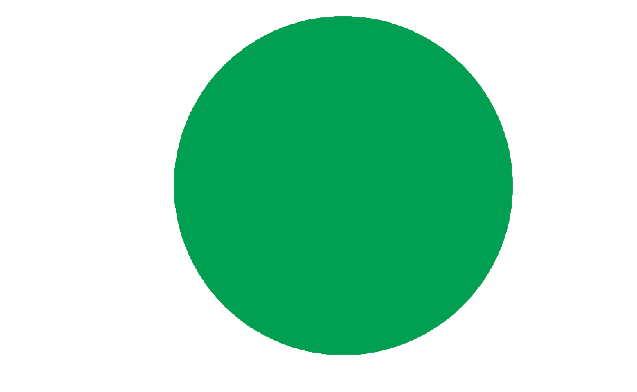
Strong
Level of evidence
Key takeaways
- breathing can be seen as a kind of remote control for the nervous system
- the nervous system regulates how we feel & how we move – so has a huge impact on performance & health
- navy seals use breathing & meditation in life-threatening situations, so we can certainly leverage this for sports performance

Strong
Level of evidence
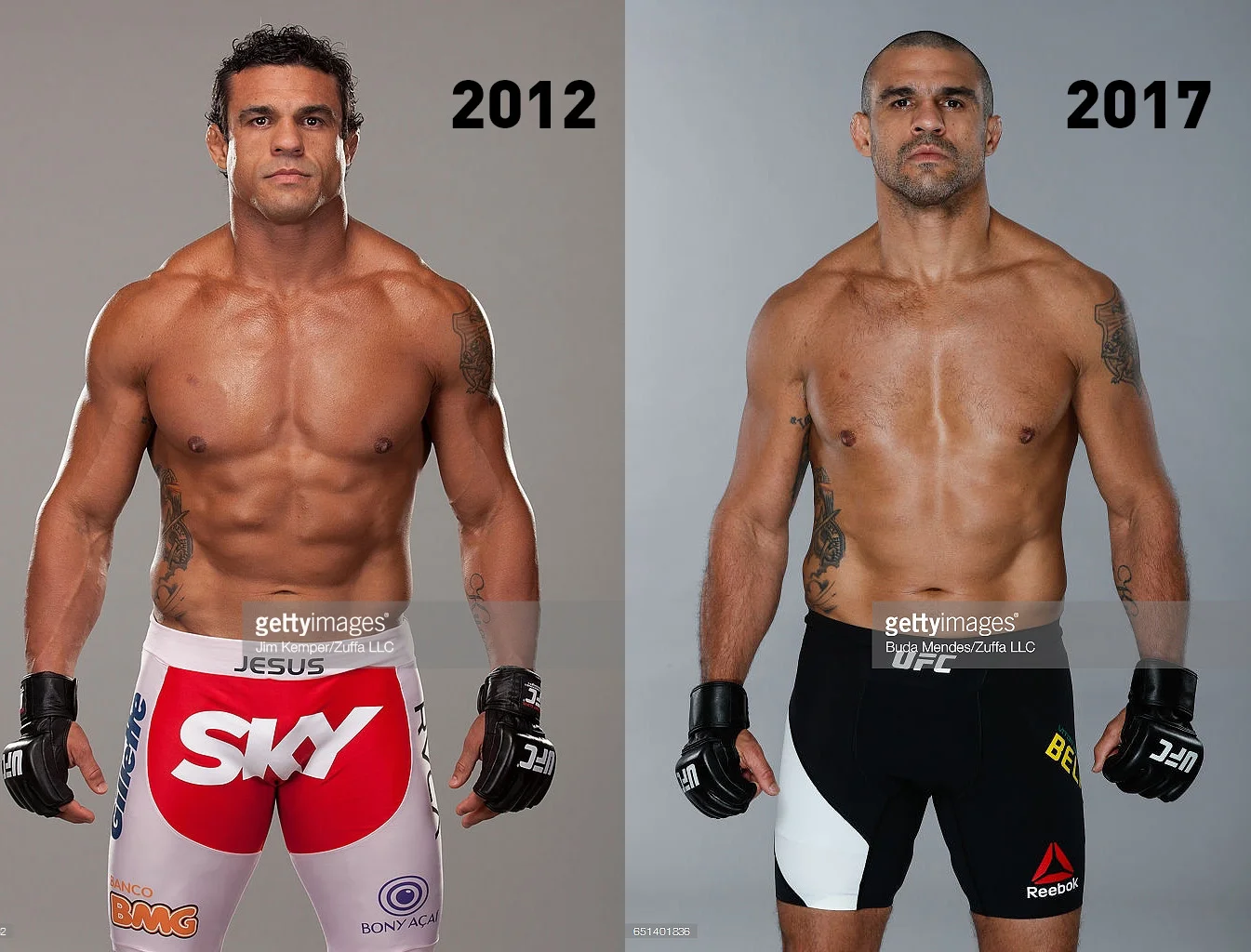
What is testosterone?
Affects motivation, power output, focus & attention, ability to build muscle
Produced in testicles, is a performance boosting hormone
Released in sleep, exercise, competition, sex
Optimizing testosterone levels
- more high quality sleep increases testosterone release
- get 20 minutes of sunlight, this provides vitamin D which boosts testosterone release
- no caffeine within 1 hour of waking, this can disrupt your body’s natural hormone cycle
- avoid healthcare products with parfum – this chemical reduces release of testosterone
- avoid food wrapped & heated in plastic, tiny pieces of plastic enter your body and reduce natural testosterone release
- eating too much tofu, soy milk & miso causes a drop in testosterone (soy products)
- keep your phone away from your balls – phone radiation from this can decrease testosterone & sperm production in the testes
- Doping testosterone (TRT – testosterone replacement therapy) can result in big drops & imbalances after stopping (see above UFC fighter Vitor Belfort before & after TRT)
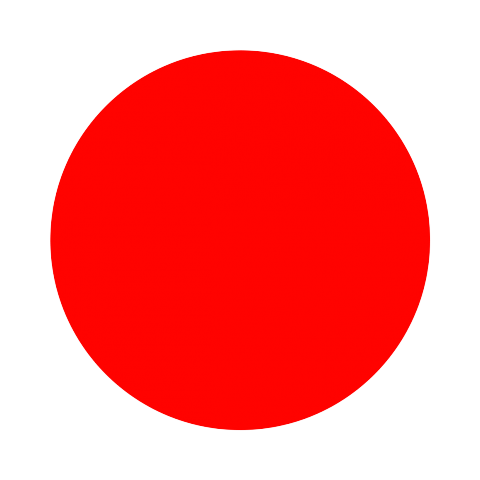
Weak
Level of evidence
Compression
Not strong evidence in support of compression garments but can help (like massage) with the perception of recovery with individuals. No risks or negatives involved so is an easy small percentage to test & use on yourself. Same with compression technologies like Normatec, the effect probably won’t be huge but can add something small to your recovery.
*localized compression can be especially useful for corks/dead-leg injuries and other joint related injuries – this is via different mechanisms and is more based on swelling

Weak
Level of evidence
”Massage has been shown to have NO effect on increasing blood flow, increasing muscle temperature, immune system benefits or improvements in passive stiffness in muscles. But what it CAN do is improve the perception of recovery by the athlete receiving it.
Science for Sport

Weak
Level of evidence
Cryotherapy
Some studies suggest it is possible to reduce the effect of DOMS (soreness) if done < 24 hours after exercise. But it is still subjective reports of improvement. It is also expensive and difficult to get regular access to. In short, it is worth trying out to experiment for yourself – but unless you have a free facility offering up cryo sessions its logistically not worth it.

Weak
Level of evidence
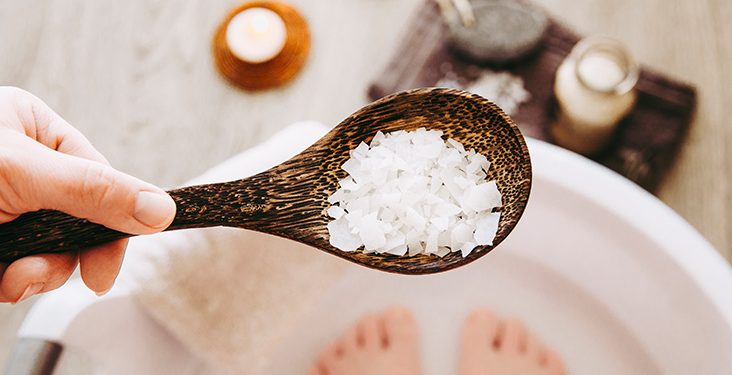
Salt baths
Magnesium baths & salt baths like Epsom have virtually zero scientific evidence behind them. It is usually claimed that magnesium can pass through the skin and be absorbed via osmosis – which is completely unfounded. It can make your hot bath feel different and maybe more relaxing, but that is pretty much it.

Weak
Level of evidence
Float tanks
There is some (but not much) evidence for the use of sensory deprivation (floating) in helping & preventing mental health issues (anxiety & depression). There isn’t much to find for sports-related research, but float tanks can be quite a useful addition to the recovery toolkit of an athlete. You should experience this at least once to see if it works for you, but sensory deprivation = no sound, light or distractions and gives you an opportunity to tune in to your body & mind.

N/A
Level of evidence
Pool exercise
Pool sessions are just an extra form of low impact exercise – minimal load on your joints due to the buoyancy of the water. There is some proposed benefits of hydrostatic pressure from pool sessions (more with injuries) but the main point is that you get your body moving in a safe/low impact environment to reduce the sensitivity of your body to soreness.
Moderate
Level of evidence
Foam rolling
Foam rolling is mainly useful for reducing sensitivity to soreness. Can be probably best used in combination with breathing & relaxation tools to make changes to the way that you feel.
Moderate
Level of evidence
Sunlight
Sunlight provides vitamin D which boosts testosterone release & has some other health benefits. 10-20 mins of sunlight outdoors depending on the intensity of the sun. Expose as much skin as you can, and make sure to not wear sunglasses – this has some other useful effects (listen to the below podcast for more).
Moderate
Lots of sleep focus
Moderate
Largely movement based


